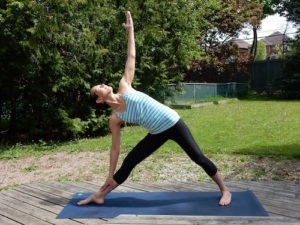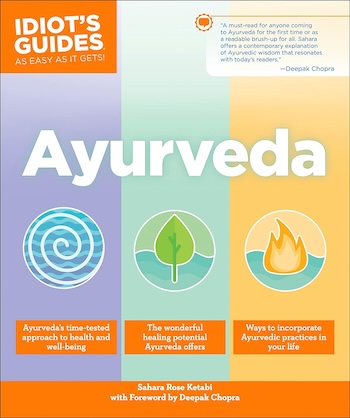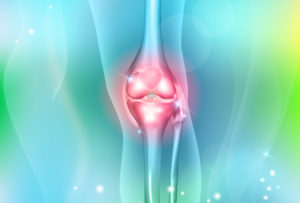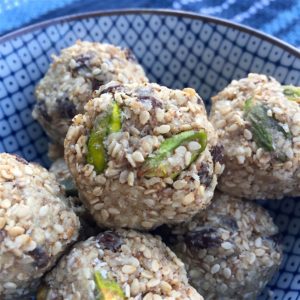The ancient practice of Ayurveda is about more than medicine and more than lifestyle guidance. It’s about finding a natural balance and living a human life in appropriate harmony with nature. For the Ayurvedic practitioner, everything that exists can be understood as a spectrum of opposites:
– Wet/dry
– Hot/cold
– Airy/earthy
– Steady/changeable
and so forth.
Viewed in this way, the seasons of the year would be classified as warm and wet, warm and dry, and cool and wet. This type of thinking can also apply to times of day, types of food, and types of people, leading to the system of doshas. According to Ayurvedic practice, illness, unhappiness, and disruption occur when these properties are out of balance, existing in either excess or deficit.
The essential properties of the doshas are:
Vata: the air element
Vatas are airy, cool, and dry. This makes them cerebral, creative, sensitive, and sometimes ungrounded. Physically, they tend to be tall, and thin, have dry skin, and are often cold. They are often inattentive to natural needs for food and sleep and can have irregular habits.
Pitta: the fire element
Pittas are warm and dry. They are strong-willed, passionate, quick learners, who often have a hot temper and impatience. They tend to have an average height and build, and have skin that reddens easily either with sun, exertion, or emotion. They have strong appetites and get grumpy if they miss a meal.

Kapha: the earth element
Kaphas are cool and moist. They are loyal, honest, compassionate, organized, and stubborn. Physically they are strong and athletic, although they tend to gain weight easily, and often have oily skin and hair. They prefer routine in most areas of life and are the most reliable of the doshas.
Each dosha has strengths and weaknesses, and those attributes are affected by diet, season, time of day, their habits, and lifestyle. While most people exist with a combination of these attributes, one set tends to dominate more than others. There are a variety of online quizzes that help a person identify their dominant dosha. FIND YOUR AYURVEDIC BODY TYPE==>
EXPERIENCE ONE OF 2025’S MOST ESSENTIAL ONLINE EVENTS IN NATURAL HEALTH & WELLNESS
When a dosha is exaggerated to the point of weakness, it is said to be aggravated. For example, Kaphas are naturally cool and moist, and, when aggravated, can be stubborn or lazy. Early in the morning, a Kapha time of day, it is easy for this excess of earthy properties to bring out the worst in a Kapha. They might experience weight gain, skin breakouts, and become lethargic and inflexible. During this time, Kapha needs to seek out balance by avoiding cold, oily foods, staying warm, and exposing themselves to new people and experiences. Avoiding foods that further accentuate Kapha attributes, and emphasizing new activities, and disrupting routine a bit, bring Kapha back into balance.

Knowing your dosha, therefore, is only part of the puzzle. Many people think that knowing your dosha is akin to knowing your astrological sign: it’s a label on who you are and how you behave, and nothing more. But Ayurveda is knowing your dosha, and then going on to manage your life to bring balance and harmony in your behaviors, governing your actions in accordance with the natural world all around you.
Therefore Ayurveda, for all its medical benefits and healing properties, doesn’t “feel” like medicine, in the sense that a specific disorder is diagnosed and treated. It “feels” more like recipes: too much of this, not enough of that, a little more here, a little less there, some of this now, and some of that later. It’s a science, but it’s also flexible and intuitive. Living an ayurvedic lifestyle involves attention to one’s nature, and the nature around you, to find and maintain balance.
YOU MAY ALSO LIKE:
WHY SHOULD YOU EAT A CUP OF APRICOTS A DAY
Did you know? The wealth of a man in the Hunza Valley (one of the world’s most famous longevity spots) is…
THE MYRIAD JOYS OF KEEPING A JOURNAL
“The moon and sun are eternal travelers. A lifetime adrift in a boat, or in old age leading a tired horse…
PROBIOTICS: WHY THEY’RE SO IMPORTANT TO OUR HEALTH
Chances are good that you’ve at least heard about probiotics—the “healthy bacteria” that can help our human bodies stay healthy. But…
NATURAL REMEDIES TO ALLEVIATE ARTHRITIS PAIN
It’s quite likely that either you or someone who you know suffers from mild, moderate or severe osteoarthritis: the “wear and…
QUIET THE CHAOS WITH MINDFULNESS MEDITATION FOR ANXIETY AND DEPRESSION
Life can get chaotic sometimes causing our minds to work overtime. This process creates unwanted stress, but there are ways to…
RAW SESAME PISTACHIO BALLS
Sesame seeds are the latest superfood. They’re not only good for your heart and blood pressure, but they also balance hormones!…








